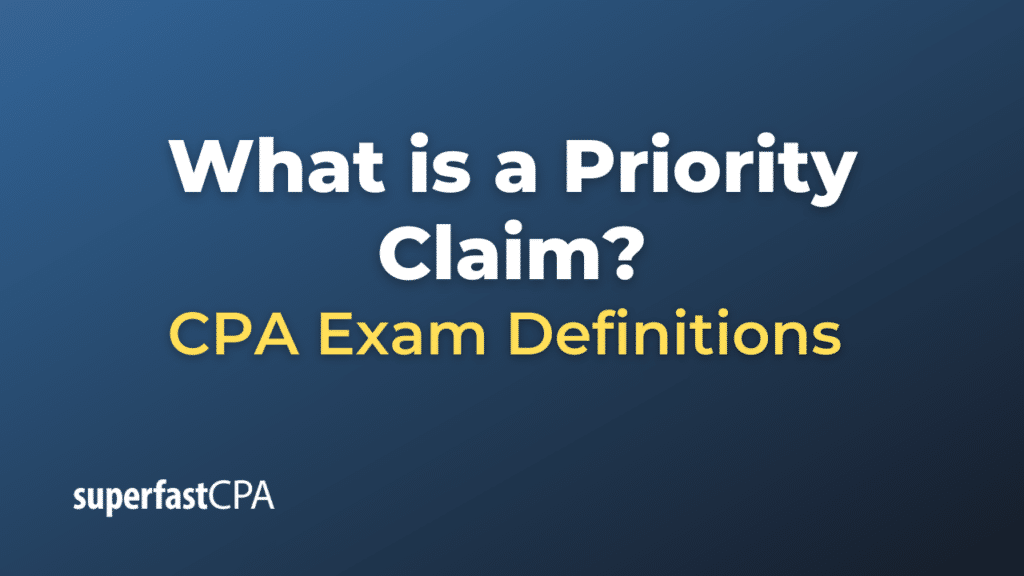Priority Claim
In the context of bankruptcy proceedings, a priority claim is a legal claim that takes precedence over other types of claims. These types of claims must be paid before other debts in the event of a liquidation. The concept exists to ensure that certain obligations of the debtor, which are considered more important or legally protected, are satisfied before others.
The specific order of priority is established by bankruptcy law and may vary between jurisdictions. In the U.S., under the Bankruptcy Code, priority claims might include certain types of tax obligations, alimony and child support, wages and salaries owed to employees, and certain contributions to employee benefit plans.
For example, if a company goes into bankruptcy and is liquidated, the proceeds from the sale of its assets are used to pay off its debts. However, not all debts are treated equally. Priority claims get paid first, before general unsecured claims. If there are not enough assets to pay off all the priority claims, then the assets are distributed among the priority claimants on a pro rata basis.
If there are assets left after all priority claims are paid, then these remaining assets are used to pay off general unsecured claims, such as trade creditors and bondholders. If there are still assets left after all debts are paid, then the remaining assets are distributed to equity holders.
Note that secured creditors, who have a security interest in a specific property of the debtor, are typically paid from the proceeds of the sale of the secured property, and are not part of the priority scheme described above.
Example of a Priority Claim
Let’s take an example of a company, XYZ Corp., that files for bankruptcy.
Suppose the company’s assets are liquidated (sold off) and the total funds available for distribution to creditors are $500,000. Now, there are several types of creditors who have claims against XYZ Corp., including:
- Secured creditors: XYZ Corp. took a bank loan of $200,000, secured by company’s machinery.
- Priority unsecured creditors: XYZ Corp. owes $150,000 in employee wages and $50,000 in taxes.
- General unsecured creditors: XYZ Corp. owes $200,000 to suppliers (trade creditors) and $150,000 to bondholders.
First, the secured creditor would be paid from the proceeds of the sale of the machinery. For simplicity, let’s say the machinery is sold for $200,000. The bank is paid in full, and this does not affect the $500,000 available for the rest of the creditors.
Next, the priority unsecured creditors would be paid. The total owed to these creditors is $200,000 ($150,000 in wages + $50,000 in taxes). The company has enough funds to pay these claims in full.
Then, if any funds are left over, they would go to the general unsecured creditors. In this case, $300,000 is left ($500,000 – $200,000) to be distributed among trade creditors and bondholders. However, since the total owed to these creditors ($350,000) exceeds the available funds, these creditors would receive a pro-rata share of the $300,000.
Finally, if there were any funds left after paying all creditors (which there are not, in this example), those would be returned to the equity holders of the company. However, in most bankruptcy cases, equity holders do not receive anything, as the claims of creditors typically exceed the available funds.
This example illustrates the concept of priority in a bankruptcy situation. Please note that the actual bankruptcy process is often much more complex and is subject to specific legal rules and procedures.













